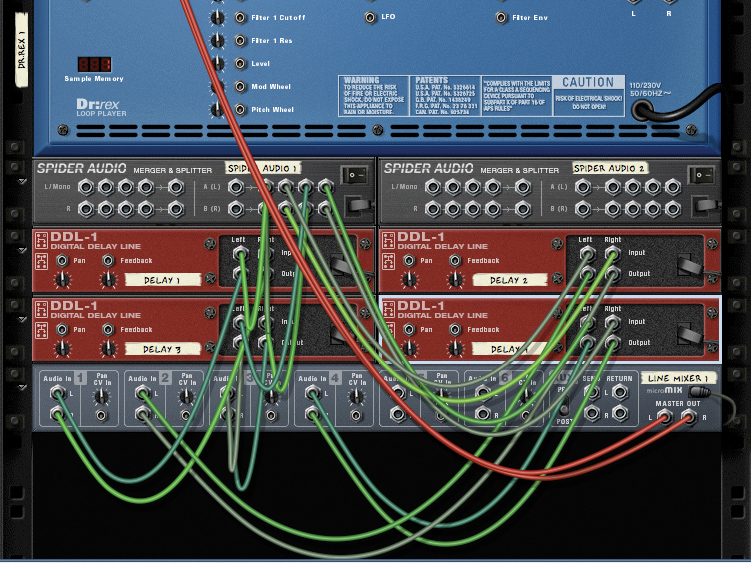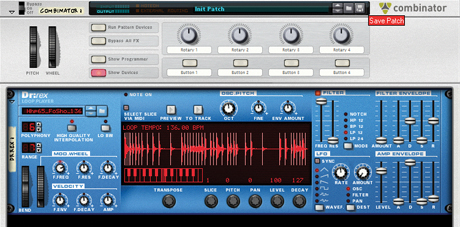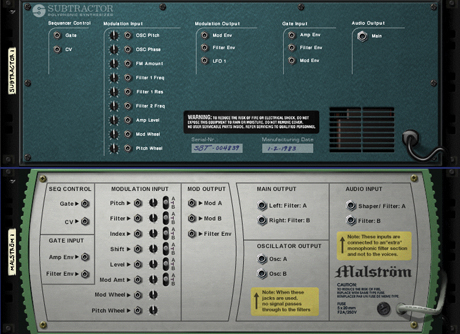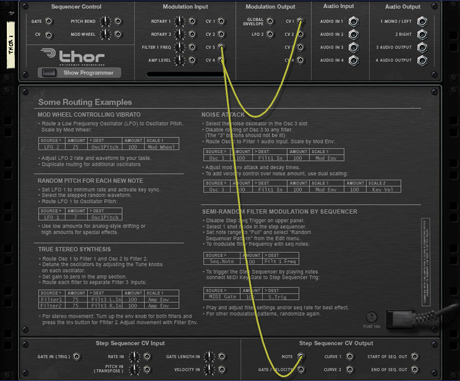14 clever Reason routing tricks
Get your hands dirty in Propellerhead's app

The front of Reason's rack-style interface sure looks pretty, but it's when you delve round the back that things start to get really interesting.
When it comes to routing, Propellerhead's software is endlessly flexible. In fact, once you start getting busy with its virtual patch cords, you can do things in Reason that simply aren't possible in any other application.
Not convinced? Here are 14 routing and combining possibilities that you might not have considered.
1. Saving up
Reason's much-lauded loop machine Dr. REX doesn't facilitate the storing of presets (or even the saving of specific commonly-used parameter setups), but you can use a Combinator as a work-around. Simply Combine a Dr. REX and save the Combinator preset. Now you've automatically saved the settings of the Dr. REX, too!

2. Ready, set, go
While Reason doesn't feature channel strip presets, it actually offers something even more versatile. By saving a commonly used sequence of effects (for bass or vocals, etc) as a Combinator patch, they're available at any time.
3. All together now
When you're working with lots of individual drums, you'll want to be able to set the levels separately, but you might also want to adjust the overall level of the section. So, create a drum group using an additional mixer and route everything to a single channel.
4. One plus one
Use a Spider Audio Splitter to create mad stereo effects from a mono signal. Simply divide the signal, apply processing to one side (or use different processing on each), then route the two resulting signals to either side of a stereo fader in your mixer.
Want all the hottest music and gear news, reviews, deals, features and more, direct to your inbox? Sign up here.
5. 'Thormidable'
Have a look around the back of some of your synths to see what modulation options are available. For example, Thor let's you route CV signals into it to control things like filter cutoff. You can also assign one modulator to multiple synths using a CV Splitter.

6. Total Control
If you want a crazy source of modulation mayhem, you can't go too far wrong with Malström and its incredible array of LFOs. Using a Spider Splitter, you can send these to multiple parameters all at once for some hectic automated control.
7. Talented Remix
The ReMix mixer enables you to control level and pan using CV controls, so you can use Spider CV Splitters to control more than one at a time with the same signal. In fact, using chained Splitters you can control an entire mixer using one signal (although you probably wouldn't want to!).
8. More saving up
It's all very well saving a Combinator patch for every occasion, but if you're going to save all the effects combinations that you think might come in handy, it's vital that you organise them neatly. Label each one clearly, and make sure you place them in easy-to-find and sensible folders.
9. Shut the gate!
Some instruments, like Dr. REX, spit out gate signals, which can be used to modulate anything that accepts this type of information. So you could, for example, use Dr. REX to send out a gate signal at the very moment every slice is triggered and then wire this into another synth's input.
10. March to a different beat
ReDrum outputs Gate signals on every channel, so you can trigger other parameters and use a CV Merger to enable up to four ReDrum sounds to control the same one - or more if you create a chain of Spiders.
11. Combined income
The Spider Audio Merger can be used to combine the inputs of a number of different sounds into one, which can then modulate the sidechain input on a compressor, thus avoiding the need for a sub-mixer.
12. Pitching up
A lot of modern electronic music uses pitchbend sweeps, and these can be applied to multiple parts by sending the signal from one synth to all of the others, using a Spider CV Splitter or two if necessary. This is also a good way to audition key changes.

13. Internal exam
Explore Thor's internal routing options and you'll discover a vast array of parameters that can be routed to its external CV outputs. There are four in total, enabling the syncing of a range of controls simultaneously, in addition to the numerous other CV outputs!
14. Punched out
Try routing higher tuned oscillators out of Thor and through Reason's effects devices, then back in, with the lower ones staying dry and punchy.
Computer Music magazine is the world’s best selling publication dedicated solely to making great music with your Mac or PC computer. Each issue it brings its lucky readers the best in cutting-edge tutorials, need-to-know, expert software reviews and even all the tools you actually need to make great music today, courtesy of our legendary CM Plugin Suite.
